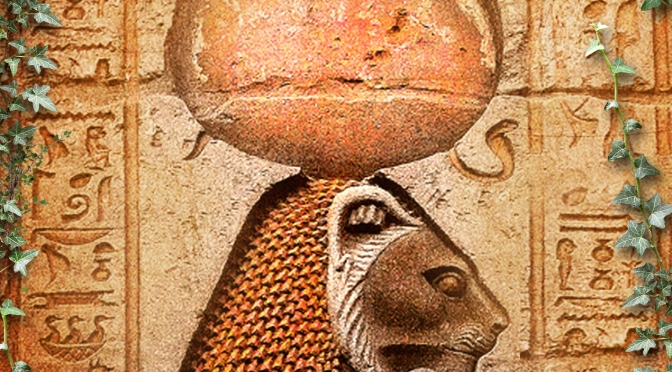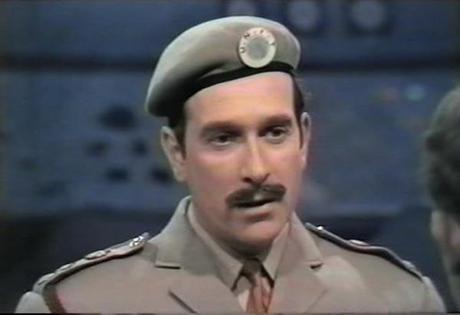So, it’s the birthday of Elisabeth Sladen, and to celebrate that wonderful woman, I present to you all my article from the You And Who: Contact Has Been Made book (now out of print).
“Don’t Forget Me”
There is something about The Sarah Jane Adventures that simply shouts out ‘brilliance’. A special and unique piece of Doctor Who history is encapsulated in that series. Like many fans of a certain age, Sarah (lest we forget that was her name long before she got re-christened Sarah Jane in 2006 – a trend that we can probably blame on Terrance Dicks’ The Five Doctors script which has, for the first time, the Third Doctor calling her Sarah Jane throughout), was the ultimate companion.
It’s not surprising, therefore, that she should be the first bona fide character to be brought back from the original series – and what a moment! Even now, seven years on, I get goosebumps whenever I watch the scene in which she sees the TARDIS in the gym cupboard, stumbles out in shock, turns and sees before her that strange new teacher. She immediately knows who it is, and when the Doctor utters the immortal line ‘hello, Sarah Jane’ television history is made. Curiously, up until that point I wasn’t quite convinced that David Tennant was the Doctor, but when Sarah accepted it, so did I. It’s at that moment, for me and for so many other fans, The Sarah Jane Adventures began.
It wasn’t the first time she was brought back, of course. She’s returned to Doctor Who twice before on TV, in a failed spin-off in 1981 and the Twentieth Anniversary adventure The Five Doctors – thirty whole years ago, would you believe! Since then she’s appeared in several novels and even starred in her own series of audio adventures called, conveniently enough, Sarah Jane Smith. I was almost the writer of the second season of that series, but as with these things, plans changed and other than a few ideas which found their way into the second season, my involvement came to nothing. One of a very few things I regret – missing out on the chance to work with Elisabeth Sladen, to help develop the more mature aspect of a character I always considered (and still do) the Doctor Who companion. As it turned out my involvement in that series did lead to my latter involvement in steampunk series Space: 1889, an association that continues seven years later, which just adds another reason why Sarah, and latterly, The Sarah Jane Adventures are so important to me.
It seems to me that even at its weakest, The Sarah Jane Adventures is still better than almost anything else on TV – sometimes even better than its parent show (and, frankly, towers over the other spin-off series, Torchwood). Yes, Doctor Who today is inconsistent as it ever was (although I still love it, and can forgive it of most things), but The Sarah Jane Adventures did something that the original Doctor Who used to do so well; it entertains, mixing comedy and drama with a healthy dose of reality, keeping fun smack bang at its core. There’s always a level of intelligence behind the stories it tells, an emotional centre that all ages can relate to on some level. For the grown-ups there Sarah’s new life as a foster parent, or her failure to find a suitable partner (not that she considers such a need often – since leaving the Doctor she seems to have developed a romanticised image of him as her perfect man, which always jars with me since there was never any indication of romantic interest from Sarah back her time-travelling days). For the youngsters watching there’s the children who help Sarah in her battle against evil alien invaders and mad scientists (a staple of the finest Doctor Who stories).
But for me it’s the essence of the show; it carries that unidentifiable magic that attracts millions to Doctor Who. I can’t say I’m totally in love with everything they do with the character – witness her jealousy when the Doctor is comforting Jo in Death of the Doctor – that always seems to be beneath the character of Sarah, but then I suppose this a woman who has got used to being the only ‘old love’ in his life, and she’s faced with someone who she, herself, once replaced, and in turn feels replaced by, decades later. Speaking of Jo, that’s another thing about The Sarah Jane Adventures, it simple sparkles with nostalgia. Mentions of Sontarans before they even returned to the parent show, mentions of UNIT and the Brigadier, even Harry. Sarah is imbedded in the history of Doctor Who, and as a fan I can’t help but love that. It’s through Sarah we get re-introduced, finally, to the Brigadier, a character whose return to Doctor Who had been building up for years – it’s such a shame we never got to see the Doctor, the Brigadier and Sarah reunited in The Wedding of Sarah Jane Smith; that would have been a supreme moment of nostalgia for everyone watching. Alas, real life tragedy interceded, and a heart attack prevented Nick Courtney from returning a second time. But we did get another returnee from the Pertwee Years – one Josephine Jones, nee Grant. Yes! What a moment. Katy Manning is well-known for what she thought would happen to Jo in the years since leaving the Doctor to explore the Amazon with her new husband, but fortunately Russell T Davies stayed true to the real character of Jo, so that when she stumbled into the Doctor’s funeral service in Death of the Doctor there was no doubt it was the same woman. The same clumsy girl who’d first introduced herself to the Doctor back in 1971 by ruining his experiment. Brilliant. Nostalgia and comedy in one.
The final thing that will always be a personal point of interest for me is, conveniently, the final episode of the series. Many years back, in about 2003, me and my then partner asked Gary Russell to hire James Dreyfus for a Big Finish Doctor Who – we didn’t care which one, any one would do, as long as Gary would introduce us to him. Gary gave us a good reason why this would not happen, which I can’t really say here, and we were a little disappointed. Lo, in 2012 the boxset of series five comes out and who do I see in the very last episode but James Dreyfus? Some years late, and still haven’t got to meet him, but he did get to appear in the Doctor Who universe – and in a series Gary was involved in. Did Gary do that for me? It’s doesn’t seem likely, but I secretly think he did. He’s nice like that.
So, The Sarah Jane Adventures, for five years it stood as the best kind of spin-off we fans could ever ask for. It had nostalgia, it had clever use of continuity, it had fun, it had heart, and it had the essence of Doctor Who in every single episode. But most of all it had Elisabeth Sladen receiving the attention she was long overdue. It’s such a shame that the fifth series got curtailed, but more of a shame that the life of one of Doctor Who’s best companion ever had to end so unexpectedly. No one saw it coming – not even her daughter and husband. The diagnosis of Lis’s cancer was so sudden. It was kept private, and rightly so. The fans had no idea, and when the news of her death hit – well, it hit. Hit every single one of us. It certainly smacked me down. Perhaps because I almost got to work with her, perhaps because I know so many people who were part of her personal and professional life and I knew how it would hit them. Or perhaps it was simply because a world with Elisabeth Sladen, without Sarah Jane Smith, scarcely bears thinking about…
Sarah Jane Smith. She’ll live on, because Lis created in her such an amazing character. There’s not a single scene that Lis doesn’t liven up by simply being in it. All the way from the research centre in The Time Warrior to Aberdeen in The Hand of Fear, through her brief returns in 1981 and 1983, and all the way through every appearance since School Reunion in 2005 up to The Man Who Never Was in 2011.
I can hardly watch The End of Time without shedding a tear. Sarah’s looking across the road at the Doctor, who is standing outside the TARDIS. A silent moment passes between them, and Sarah just knows she won’t see him again. Not in that incarnation. That’s how it plays out. But now when Sarah’s eyes well up with that certainty, mine do, too. Because I know we’ll never see Elisabeth Sladen in any new Doctor Who again. The show’s fiftieth anniversary, and Lis should have been a part of it.
Sarah… Lis, you left too soon. But you go on always.






 Lethbridge-Stewart. The fellow you’d want on your side in any fight.
Lethbridge-Stewart. The fellow you’d want on your side in any fight. 


